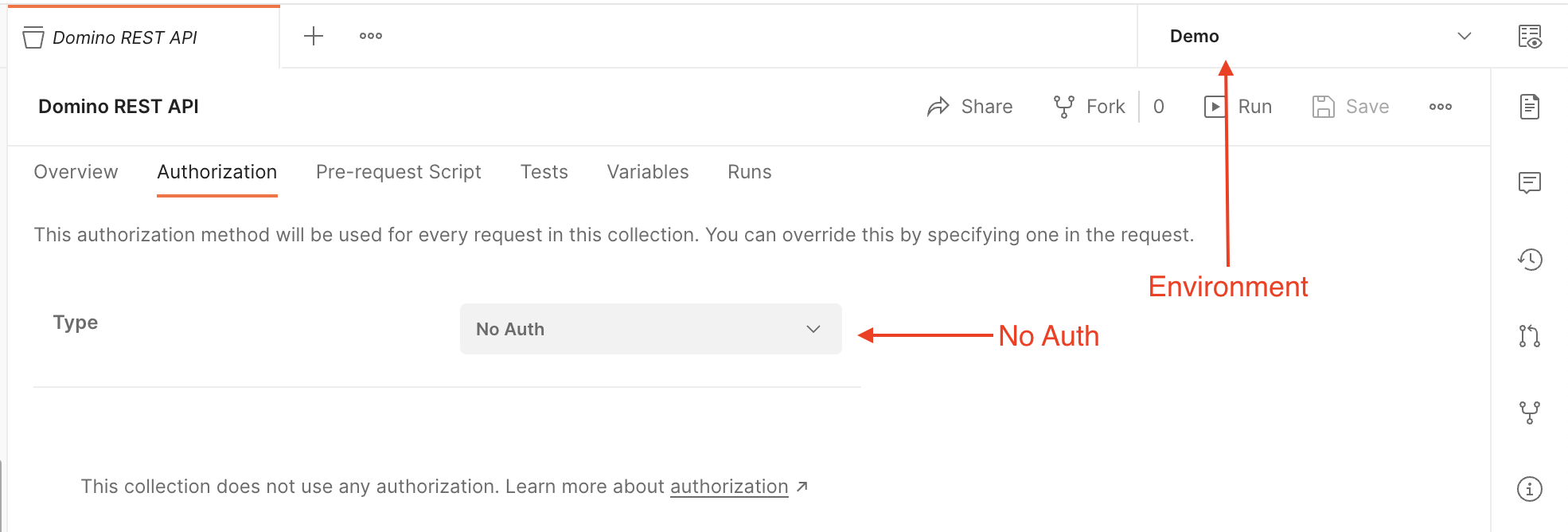Code examples
The Domino REST API can be called by any http library in any language following these simple steps:
-
Obtain a valid JWT Access Token from your configured Identity provider. Out of the box, that would be your REST enabled Domino server using a
POSTrequest with JSONusernameandpasswordas body to the URL/api/v1/auth. In the resulting JSON, thebeareris your JWT Access Token. -
Pick the operation you want to complete from the OpenAPI spec and provide the bearer in the
Authorizationheader asBearer [insert bearer here]. You could do a pre-check if the bearer is still valid.
Sample applications
Look at the implemented source code to see a working implementation
| Mentioned | Source | Language |
|---|---|---|
| Walkthrough Lab 06 | Source | NodeJS (OAuth) |
| Walkthrough Lab 07 | Source | JavaScript (Browser) |
| Walkthrough Lab 08 | Source | Java |
| The landing page | use view source |
JavaScript |
Read more details in the sub-pages (menu on the left).
On Postman usage
Postman offers to handle authentication for a user, which is "just" a shiny UI covering what goes into the Authorization header. For our sample collection, we took a different approach following the 2 steps outlined above. We use a Postman environment to capture the bearer in a test:
-
Have an environment and set the collection to
No Auth.
-
Have a login action that pulls username/password from the environment (you have to add them there).

-
Use the Tests tab to capture the Bearer.

This simplifies operation. running the login action won't require manual copy & paste bearer information anymore
-
In all operations, set the
Authorizationheader toBearer {{ AUTH_KEY }}.
Postman provides code
Activating the code panel </> provides over 30 variations in various programming languages, including shell scripting (curl / powershell), how to code a given call.
